![]()
![]()
![]()
Use LEFT and RIGHT arrow keys to navigate between flashcards;
Use UP and DOWN arrow keys to flip the card;
H to show hint;
A reads text to speech;
38 Cards in this Set
- Front
- Back
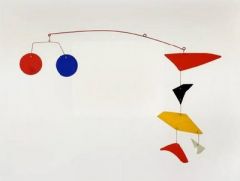
|
ALEX CALDER
- Strived for abstraction in sculpture (influenced by Mondrian) - Departure from art as a static endaevour; art could be kinetic |
|
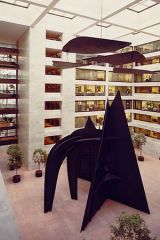
|
ALEX CALDER
"Mountains and Clouds" in Hart Senate Office Building - One of his large-scale "stabiles" - Intended his viewers to appreciate his sculptures for their shape, color, and natural reaction to the surrounding environment - Avoided emotive themes but drew from surrealism and embraced large-scale creations |
|
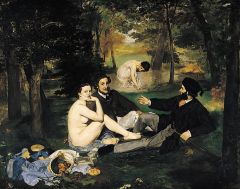
|
EDOUARD MANET
"Le Déjeuner sur l'Herbe" - Among the early iconoclasts who broke from the salon; featured in the 1863 Salon des Refusées; this departure ultimately led to the development of Impressionism - Looser painting style - Focused on images of everyday life - Broke with strict rules of linear perspective, shading, and idealism; popularized the "alla prima" method, in which artists just use the color that most matches the final on they're going for, rather than applying color in layers; thus, his paintings are among the first to have "flatness" in them |
|
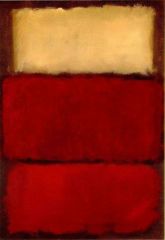
|
MARK ROTHKO
- Interested in more than relationships between colors; he strove to convey basic human emotions - Strove for simple communication of complex thoughts |
|
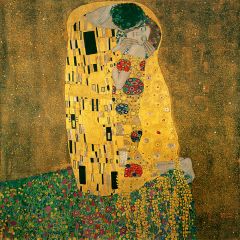
|
GUSTAV KLIMT
"The Kiss" - Part of the Vienna Successionist movement, which broke away from academic historicism, similar to the way the impressionists did in France |
|
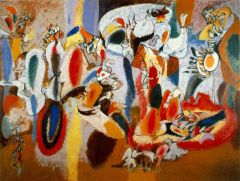
|
ARSHILE GORKY
"The Liver is the Cocks Comb" - Marriage of Expressionist and Surrealist movements - Pioneered the trend of labeling seemingly abstract visuals with titles referring to "real" objects - Influenced by his personal experiences as genocide survivor |
|
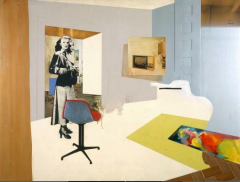
|
RICHARD HAMILTON
- Represented one of the 5 "image types" in Pop Art, as described by Hal Foster (the others being Lichtenstein, Warhol, Richter, and Ruscha) - Images had a tabular quality; used the lush qualities of paintings to draw attention to commercial surfaces, such as the lacquered body of a car and the skin of a woman, in juxtaposition with collaged images of commercialism |
|
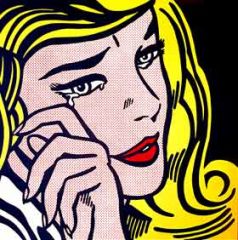
|
ROY LICHTENSTEIN
- Represented one of the 5 "image types" in Pop Art, as described by Hal Foster (the others being Hamilton, Warhol, Richter, and Ruscha) - Images had a very comic book-like quality to them - Showed that you could create powerful subject matter using popular imagery |
|
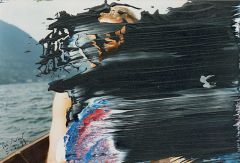
|
GERHARD RICHTER
- Represented one of the 5 "image types" in Pop Art, as described by Hal Foster (the others being Hamilton, Warhol, Lichtenstein, and Ruscha) - Mixed photographs with paintings to illustrate how humans are almost incapable of processing life without the photograph lens anymore - There is often a graveness to the photographs, suggesting threat of forgetting and the sorrow of time lost - His addition of paint reminds that these are not just photographs we're looking at, but art images that lie in a grand tradition of memorializing the past; painting in the modern world might still hold the promise of preserving memory |
|

|
ED RUSCHA
- Represented one of the 5 "image types" in Pop Art, as described by Hal Foster (the others being Hamilton, Warhol, Lichtenstein, and Richter) - Drew upon the imagery of Los Angeles's landscape - Drew from cinema, creating images that were both deep and superficial, illusionist and flat; he often includes wording over the images like the credits and subtitles in movies whose superficial application draws attention to the overall flatness of the surface and contrasts with the apparent depth of the image on which it is superimposed |
|
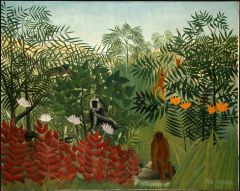
|

HENRI ROUSSEAU
- Quintessential "native" artist; evident lack of academic training imbued his work with a sense of mystery and eccentricity - Picasso lauded his "primitive" sincerity and directness - Mixed "high" imagery from sources such as academic sculpture and trips to public zoos and gardens with " low" imagery of primitive settings, creating a jarring contrast that was celebrated by Surrealists |
|
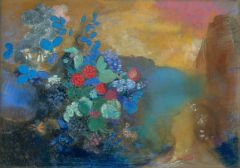
|

ODILON REDON
- Late 19th century - Symbolist; literary Symbolists (i.e. Beaudelaire and Poe) and musical Symbolists (i.e. Debussy) believed that in sound and rhythm, one could find meaning; Redon believed color and line could also express ideas, which separated him from Impressionists, who had more naturalistic aims - Sought to evoke a sense of mystery, similar to the one he felt in the presence of nature |
|

|
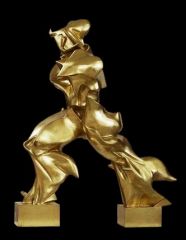
UMBERTO BOCCIONI
- Began as a Neo-impressionist, influenced by landscape and portraiture; after experiencing cubism, he infused his work with geometric forms that evoked crashing, startling sounds to suggest societal upheaval; thus, he created Italian Futurism - Believed scientific advancement and modernity demand that the artist abandon static, legible object and instead depict movement and the experience of flux ("physical transcendentalism") - Believed in the intuition of the artist, much like Symbolists, so infused his work with emotion, which distinguished him from Cubists, who wished to depict the physical nature of the object, albeit in a new way |
|
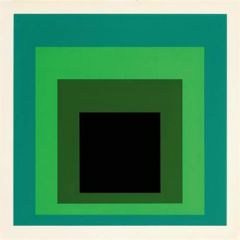
|

JOSEF ALBERS
- Began working in Bauhaus - Believed shapes and colors could convey complex emotions - His "Home to the Square" series was a quasi-scientific exploration on the optical effects of color within the confines of a uniform square |
|
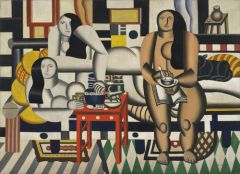
|

FERNAND LÉGER
- Early 20th Century - Cubist, so he believed in freeing the painter from realism; often more purely abstract than his contemporaries (i.e. Picasso and Braque) - Sought to depict the noise, dynamism, and speed of new technology; often depicted humans in motion |
|

|
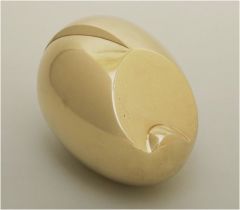
CONSTANTIN BRANCUSI
"Bird in Space" (on front) - Believed artists should convey the true essence of their subject matter; argued that he was not an abstractionist, insisting that he represented a fundamental, often concealed, reality of his subjects - Influenced by myth, folklore, and "primitive" cultures, giving his works a distinct blend of modernity and timelessness - Very attentive to his medium, often polishing it for days to give it a gleam that suggested infinite continuity with surrounding space |
|
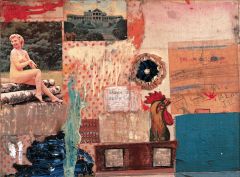
|

ROBERT RAUSCHENBERG
- Admired Abstract Expressionists, but sought to further free art - Saw beauty in everyday objects that others would trash - Neo-Dada artist, assembling objects without any apparent order or meaning; his "Combine" combined paint and found objects, asserting his authority as the artist to declare what was "art," but didn't provide much commentary so that viewers could interpret it themselves |
|

|
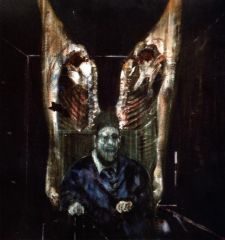
FRANCIS BACON
- Explored humanity's potential for self-destruction in the post-war era - Respected the medium of painting, but incorporated depictions of motion from film and photography |
|
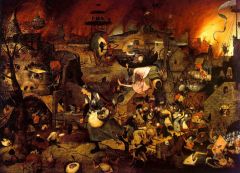
|

HIERONYMUS BOSCH
- Middle Age painter who created uncanny pieces - Modern critics argue that his work is based on orthodox religious beliefs, rather than fantasy; examines the sins of humanity - Created to depict certain moral and spiritual truths in the sprit of the Northern Renaissance |
|
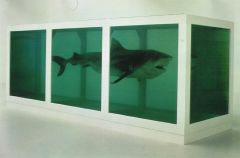
|

DAMIEN HIRST
- Front: "The Impossibility of Death in the Mind of Someone Living" - Back: "Beautiful Revolving Sphincter, Oops Brown" |
|
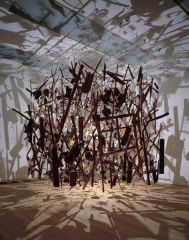
|

CORNELIA PARKER
- Her work appears to deal with themes of destruction, metamorphosis, and the space between objects, but does not want her work infused with fixed meaning; she wants there to be a certain ambiguity to it |
|
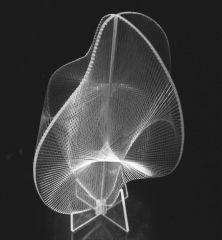
|

NAUM GABO
- Post-revolution Constructivist in Russia; pioneered kinetic sculpture; influenced de Stijl and Bauhaus - Wished to explore space without necessarily depicting mass |
|
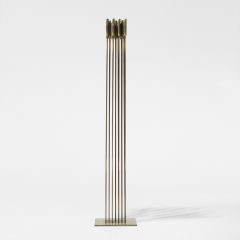
|

HARRY BERTOIA
|
|
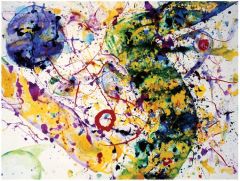
|

SAM FRANCIS
|
|
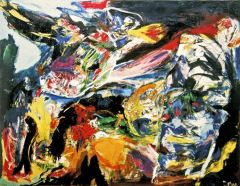
|

ASGER JORN
|
|
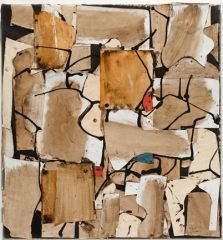
|

CONRAD MARCA-RELLI
|
|
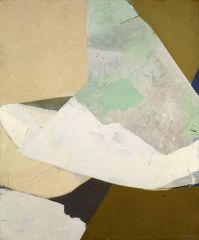
|

KENZO OKADA
- Studied modern art in Paris and then landscape painting in Japan - Stimulated by abstract expressionism, but maintained his Japanese sensibilities in the delicate, sensitive color tonalities |
|
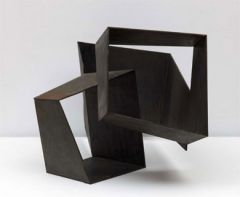
|

JORGE OTEIZA
- 1950s - Believed he reduced the materiality of his sculpture down to "a spiritual essence bounded by a physical foil or shell" - Influenced by the spiritual energy in Colombian megalithic statues, which he saw as transcendent presences of the soul's eternal life |
|
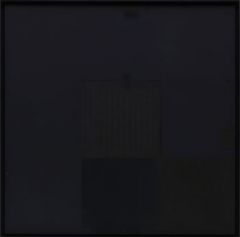
|

AD REINHARDT
- Grew up in Riverside then went on to study at Columbia - Believed the one objective of abstract art was to create "art-as-art," so artists have sought to increasingly purify the painting; he believed that he created the last type of abstract painting possible, by reducing the painting to shades of black, which he said some do not even consider to be a color |
|
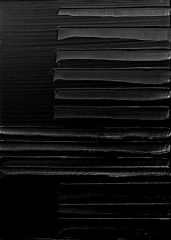
|

PIERRE SOULAGES
- Known as "the painter of black" - Believed that the color black had a unique ability to transmute light and open up a mental field all of its own - He created striations in black surfaces so that light could reflect in various ways |
|
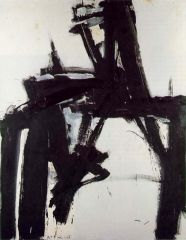
|

FRANZ KLINE
- Action painter; his drafted his "spontaneous" sketches - Heeding a suggestion by de Kooning, he used an opaque projector to enlarge sketches of objects and turn them into abstractions through his freeing brush strokes |
|
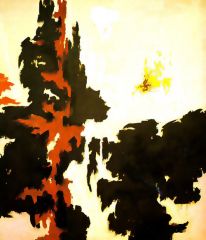
|

CLYFFORD STILL
- Color field abstract expressionist, but colors in a much less regular way than artists, such as Rothko and Newman - His jagged flashes of color give the impression that color has been torn off the painting revealing color underneath - Irregular expanses of color recall natural forms and phenomena |
|
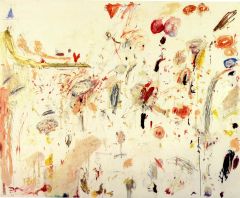
|

CY TWOMBLY
- Interested in "primitivism" |
|
|
What is the general tenet of Romanticism and when did it arise?
|
- Intended to evoke human emotion; began in the early 19th century with literature (Lord Byron, Percy Shelley, William Wordsworth) and music (Beethoveen, Strauss, Chopin), and later arose in art
- Often depicted landscapes and sought to depict the sublime and invoke a sense of nostalgia, as industrialism was on the rise; sought to elevate the "value" of landscape paintings by giving them a spiritual quality; it became a new way to depict the power of God in a way that would still be moving in the industrial age, when traditional Christian imagery was no longer as poignant |
|
|
Describe the general timeline of French politics following the French Revolution?
|
- 1789: After the American Revolution, the Louis XVI called for new tax laws, so Estates General convened; Estates General was composed of three "Estates" (clergy, nobility, and the rest of France); the latter declared itself a National Assembly, who suspended taxes and drew up a new constitution with a Legislative Assembly
- 1792: The Jacobins forced the Legislative Assembly to replace itself with the National Convention, which abolished the monarchy and led to the execution of Louis XVI - 1793: Clash between the Girondins (Jacobins more in favor of legality ) and the Montagnards (more readical Jacobins in favor of mob rule) was won by the latter, which led to Reign of Terror (orchestrated by Robespierre); a coup ended Reign of Terror and led to new constitution - 1804: Napoleon became one of the three consuls intended to rule France under the new constitution; he declared himself emperor for life - 1815: Napoleon defeated and monarchy restored - 1830: July Revolution results in overthrow of Charles X; replaced with Louise Philippe under constitutional monarchy |
|
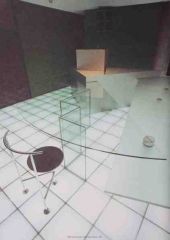
Front (Term) |
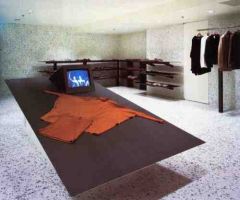
Shiro Kuromata |
|
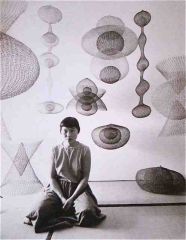
Front (Term) |
Ruth Asawa |
|

Front (Term) |
Christian Rosa |

